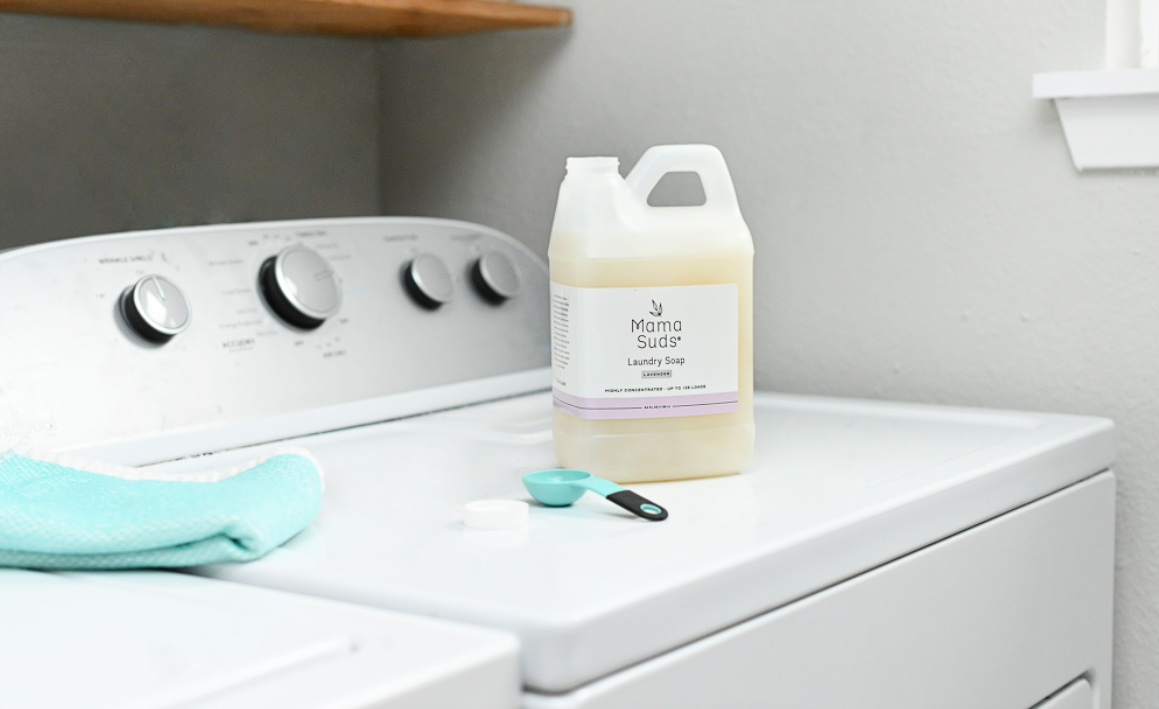
10 Eye-Opening Truths About Non-Toxic Laundry Detergent
(And How to Make the Switch Without Sacrificing Clean Clothes!)
1. The Problem: Your Laundry Detergent is a Cocktail of Hidden Toxins
Most conventional laundry detergents contain synthetic fragrances, optical brighteners, and surfactants that leave behind a toxic residue on clothes. These chemicals can irritate skin, disrupt hormones, and even affect respiratory health.
Unexpected Solution:
Switch to a truly non-toxic, residue-free detergent made with simple, safe ingredients like castile soap and mineral-based boosters. The key? Ditching unnecessary additives that do more harm than good.
Benefit:
Your clothes will be clean without exposing your skin (or your kids’) to harmful chemicals, reducing allergic reactions and long-term health risks.
💡 Three Quick Tips to Get Started:
- Check the ingredient list for SLS, phthalates, and optical brighteners—if they’re there, ditch it!
- Try washing a load with only hot water—if suds appear, that’s detergent residue left behind.
- Swap to a concentrated, plant-based detergent like MamaSuds to clean effectively without toxins.
2. The Problem: "Free & Clear" Isn't Actually Free of Toxins
Many detergents labeled “free & clear” still contain synthetic preservatives and hidden irritants like formaldehyde-releasing agents.
Unexpected Solution:
Look for brands that fully disclose ingredients instead of hiding behind vague labels like “proprietary blend.” A good rule of thumb? If you can’t pronounce it, don’t use it!
Benefit:
You'll avoid hidden irritants, reducing skin flare-ups and allergic reactions for your entire family.
💡 Three Quick Tips to Get Started:
- Research your detergent on EWG’s Skin Deep Database to see how safe it really is.
- Switch to a detergent made with only mineral and plant-based ingredients (like castile soap).
- Test your current detergent—wash a shirt with just hot water and smell it. If it still has fragrance, it's leaving behind residue.
3. The Problem: Fabric Softeners Are Just Chemical Coatings
Fabric softeners and dryer sheets leave a layer of artificial chemicals on clothes that mimic a “soft” feel but don’t actually improve fabric quality.
Unexpected Solution:
Use vinegar in the rinse cycle and wool dryer balls instead of toxic softeners—your clothes will be naturally soft and static-free.
Benefit:
Your laundry will smell fresh, feel soft, and be free from unnecessary chemical exposure.
💡 Three Quick Tips to Get Started:
- Add ½ cup of vinegar to your washer’s rinse cycle instead of fabric softener.
- Toss wool or up cycled dryer balls in with your clothes to reduce static and soften fabric naturally.
- Avoid synthetic “clean scents” by using essential oil-infused wool balls for a light, natural fragrance.
4. The Problem: Your "Fresh Laundry" Smell is Actually Synthetic Fragrance
The artificial scent in most detergents is made from a cocktail of undisclosed chemicals that can trigger allergies, asthma, and headaches.
Unexpected Solution:
Ditch fake fragrances and embrace true freshness by washing with unscented, residue-free detergent. If you love a scent, add a few drops of pure essential oil to wool dryer balls instead.
Benefit:
Your laundry will actually smell clean instead of masking odors with harmful chemicals.
💡 Three Quick Tips to Get Started:
- Choose unscented detergents to avoid hidden synthetic fragrances.
- Add a few drops of lavender or lemon essential oil to wool or up cycled dryer balls for a natural scent.
- Air-dry your clothes outside when possible—the fresh air works wonders.
5. The Problem: Residue from Conventional Detergent is Trapped in Your Clothes
Most detergents don’t fully rinse out, meaning chemicals stay on your clothes and transfer to your skin all day long.
Unexpected Solution:
Run a detox wash by stripping your clothes with castile soap, oxygen powder, borax, and washing soda to remove built-up detergent residue.
Benefit:
Your clothes will feel truly fresh, and your skin won’t be absorbing leftover chemicals.
💡 Three Quick Tips to Get Started:
- Fill your washer with hot water, add ½ cup borax + ¼ cup washing soda + ¼ cup oxygen powder, and ½ of castile soap, and let it soak for an hour.
- Switch to residue-free detergent to keep clothes truly clean.
- Use an extra rinse cycle to remove any lingering detergent.
6. The Problem: Your Detergent Might Be Killing Your Microbiome
Harsh detergents strip away natural oils from clothing and destroy good bacteria on your skin, leading to irritation.
Unexpected Solution:
Choose a gentle, residue-free detergent that cleans without stripping natural protective oils from your skin or clothes.
Benefit:
Your skin will stay healthier, and clothes will feel softer without unnecessary wear and tear.
💡 Three Quick Tips to Get Started:
- Look for residue-free detergents that won't leave behind unwanted ingredients.
- Avoid antibacterial detergents—they kill good bacteria too.
- Wash clothes in cooler water to preserve fabric and skin microbiomes.
7. The Problem: Your Baby’s Clothes Are Covered in Harsh Detergent Residue
Baby skin is extra sensitive, yet most baby detergents still contain sulfates and synthetic softeners.
Unexpected Solution:
Wash baby clothes with the same non-toxic detergent you’d trust for yourself—no need for separate products!
Benefit:
Fewer rashes, less irritation, and peace of mind knowing your baby’s clothes are truly clean.
💡 Three Quick Tips to Get Started:
- Wash baby clothes in hot water first to strip off any factory residues.
- Use a clean-rinsing, non-toxic detergent without sulfates or fragrances.
- Skip dryer sheets—air-dry or use wool/upcycled dryer balls to keep baby clothes soft.
8. The Problem: DIY Laundry Detergents Don't Actually Work Well
Many DIY recipes lack proper surfactants and leave buildup, leading to dingy clothes over time.
Unexpected Solution:
Instead of DIY, use a concentrated, eco-friendly detergent with effective yet safe ingredients.
Benefit:
You'll get truly clean clothes without buildup or ineffective washing.
💡 Three Quick Tips to Get Started:
- Look for a detergent with saponified oils (like castile soap) for real cleaning power.
- Avoid borax-heavy DIY recipes—they can be harsh on clothes. A little bit of borax goes a long way.
- Test your detergent by soaking a clean shirt in warm water—if the water turns murky, it’s leaving residue.
9. The Problem: Liquid Detergents Waste Water & Plastic
Most commercial liquid detergents are 90% water and require heavy plastic packaging.
Unexpected Solution:
Use concentrated refills or powdered detergents to reduce waste.
Benefit:
Less plastic waste, lower carbon footprint, and a cost-effective laundry routine.
💡 Three Quick Tips to Get Started:
- Buy laundry concentrate refills instead of bulky plastic jugs.
- Store detergent in a glass jar to eliminate single-use plastic.
- Use a pre-measured scoop to avoid wasting detergent.
By switching to a non-toxic, residue-free detergent like MamaSuds, your clothes, skin, and home will be cleaner, healthier, and safer—without the scary chemicals hiding in mainstream brands. 🚀 💚



Leave a comment